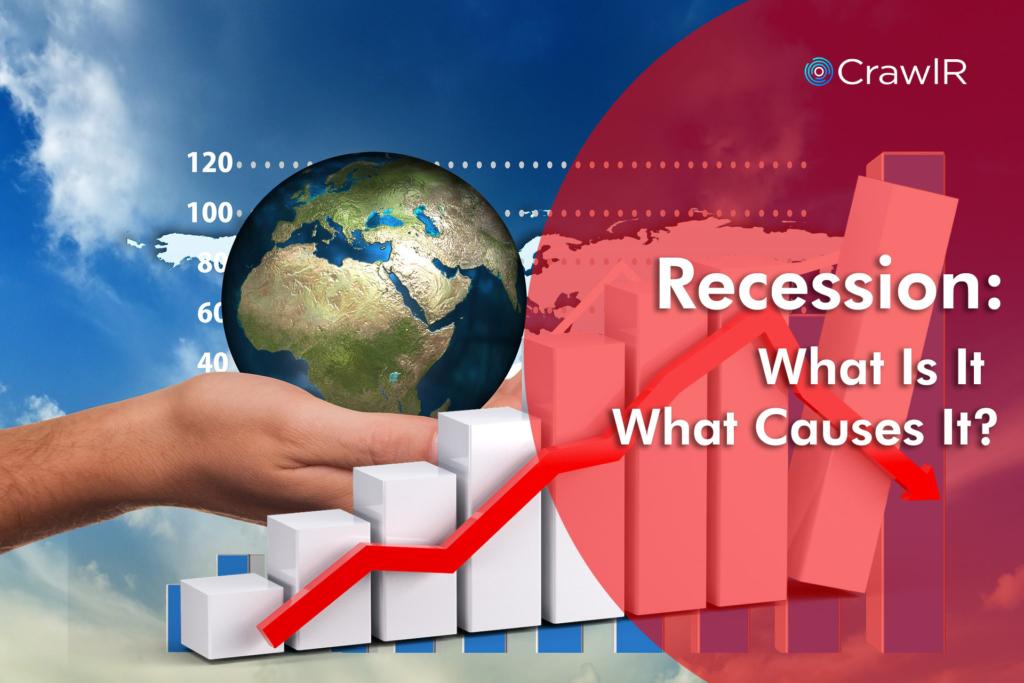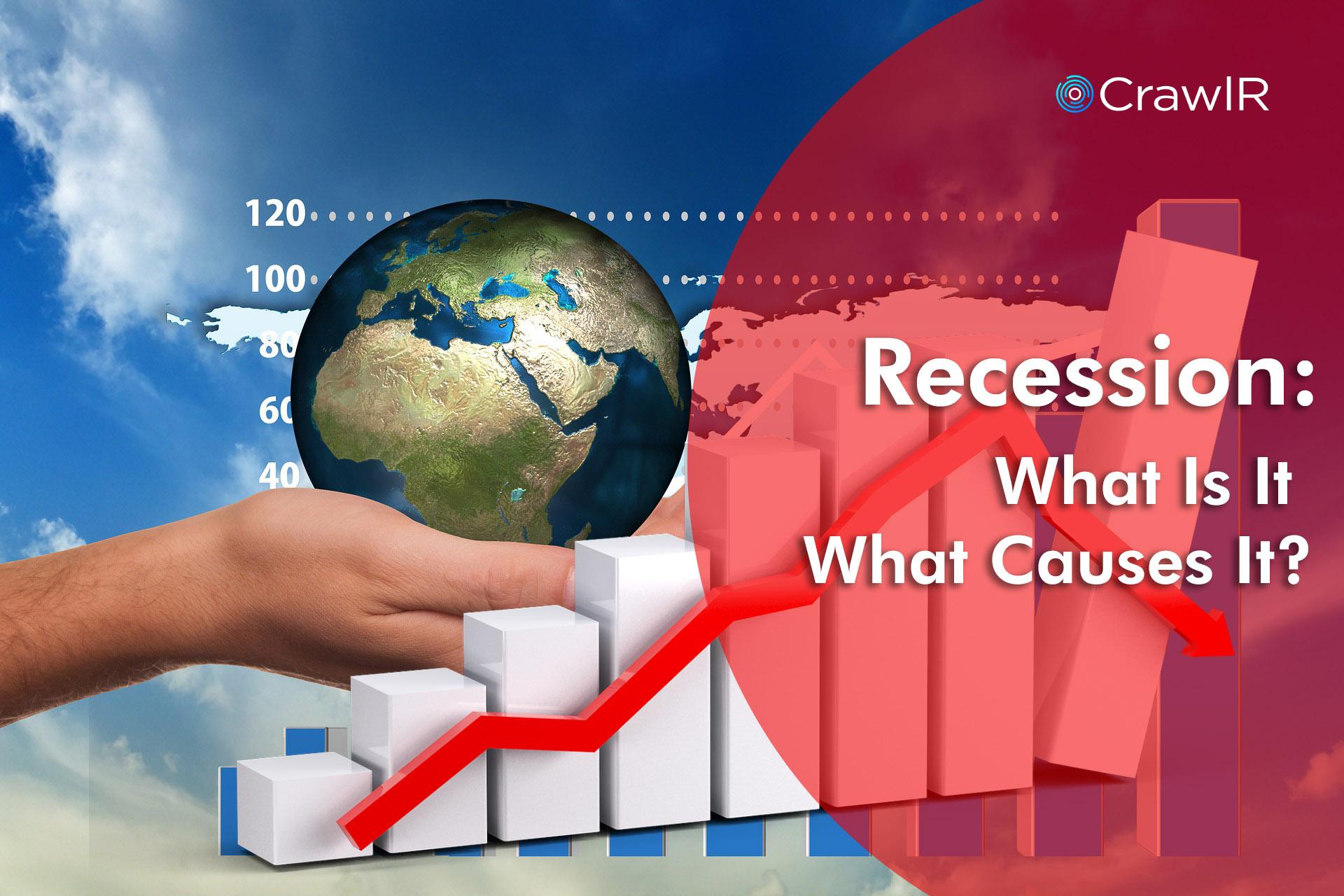What is Recession?
Recession: A recession is a period of economic decline, typically defined as two consecutive quarters of negative GDP growth. During a recession, there is a decrease in consumer spending, business investment, and overall economic activity. This often leads to an increase in unemployment, as businesses lay off workers or go bankrupt. Additionally, during a recession, consumer confidence typically drops, which can further discourage spending. A recession can also lead to a decline in housing prices and a decrease in stock market values. Recessions can have both short-term and long-term effects on individuals, businesses, and the economy as a whole. Central Banks and Governments play a crucial role in counteracting a recession by implementing monetary or fiscal policies. These policies can help stabilize the economy and reduce the severity and duration of a recession.
What is the cause of the Recession?

Recessions can be caused by a variety of factors. Some common causes include:
- Overheating economy: When an economy is growing too quickly, it can lead to inflation and rising interest rates. This can make it more difficult for businesses to borrow money and for consumers to afford loans, which can slow down the economy.
- Financial crisis: A crisis in the financial sector, such as a bank failure or a stock market crash, can cause a recession. This is because a financial crisis can make it more difficult for businesses and individuals to borrow money and can lead to a decrease in consumer and business spending.
- Policy changes: Government policies can also cause a recession. For example, if a government raises taxes or tightens regulations, it can make it more difficult for businesses to operate and can lead to a decrease in economic activity.
- International trade: A recession can also be caused by a decline in international trade. For example, if a country’s major trading partners are in a recession, it can lead to a decrease in demand for that country’s exports and can cause its own economy to slow down.
- Natural Disasters: Natural disasters, such as hurricanes or earthquakes, can disrupt economic activity and cause a recession.
It’s worth noting that recessions often have multiple causes and it’s not always easy to determine a single cause. And sometimes recessions are caused by a combination of factors.
Read Also : Warren Buffett Tips for Investment
Recession versus Depression
A recession is a period of economic downturn, characterized by a decline in gross domestic product (GDP), increased unemployment, and a general reduction in economic activity. It is typically defined as two consecutive quarters of negative GDP growth. A recession is considered a normal part of the business cycle and is generally considered less severe than a depression.
A depression, on the other hand, is a much more severe and prolonged economic downturn. It is characterized by a significant and prolonged decline in economic activity, as well as high levels of unemployment and deflation. Depressions are considered to be much more severe and longer-lasting than recessions. They can last for several years and can have a devastating impact on individuals, businesses, and the economy as a whole. The Great Depression of the 1930s was the most severe economic depression in modern history.
It’s worth noting that the term “depression” is not a officially defined economic term and it’s not always easy to draw a clear line between a recession and a depression. However, a depression is generally considered to be a more severe and prolonged downturn than a recession.
What is Recession sock ?
“Recession sock” is a term that has been used to describe a trend where people are buying and hoarding large quantities of socks as a way to prepare for a potential economic downturn. The idea is that if there is a recession, people may not have as much disposable income to spend on non-essential items, so they will want to have a stockpile of socks to ensure they have a steady supply. This trend is also associated with the idea of “recession-proofing” one’s wardrobe by investing in versatile, long-lasting items like socks, which are considered essential.
It’s worth noting that this term “recession sock” is a relatively new term and is not a well-established trend, so it’s not clear how widespread it is. Also, it’s worth noting that hoarding or stockpiling any goods, whether it be socks or anything else, is not a good idea, as it leads to shortages and price increases for others, and it can also be a sign of financial insecurity.
Recession in India

India, like many other countries, has experienced economic downturns, commonly known as recessions. The country’s economy has been affected by both global and domestic factors.
One of the most recent recessions in India was in 2019-2020, when the country’s GDP growth rate fell to 4.2%, the lowest in over a decade. This was due to a combination of factors, including a decline in consumer spending and business investment, as well as a slowdown in the global economy. Additionally, India was hit by an agricultural crisis, high unemployment, and the liquidity crisis caused by the collapse of non-banking financial companies.
The COVID-19 pandemic in 2020 brought the global economy to a standstill and India was no exception. The government imposed a nationwide lockdown to curb the spread of the virus, which led to a sharp decline in economic activity and employment. The country’s GDP contracted by 7.7% in the April-June quarter of 2020.
The Indian Government has taken several measures to revive the economy, such as providing liquidity support to businesses, announcing fiscal stimulus packages, and implementing structural reforms. However, the country’s economic recovery has been slow and uncertain, with high inflation and unemployment rates remaining a concern.
It’s worth noting that India’s economy is diverse and complex, and the country has a large informal sector that is not captured by official data. So, it’s difficult to make a clear assessment of the country’s economic situation without taking into account all the factors involved.
Great Recession
The Great Recession was a severe global economic downturn that began in 2008 and lasted until around 2009. It was caused by a financial crisis that began in the United States, where the housing market and the value of mortgage-backed securities collapsed. This led to a worldwide credit crunch and a liquidity crisis, as banks and other financial institutions found themselves with large amounts of bad debt.
The crisis was triggered by the subprime mortgage market in the US, where many borrowers were given loans they could not afford to repay. When the housing market began to decline, many of these borrowers defaulted on their loans and the value of the securities backed by these loans also declined, causing significant losses for banks and other financial institutions.
As a result of the crisis, many banks and other financial institutions failed or were bailed out by governments, and there were sharp declines in stock markets around the world. The crisis also led to a significant decrease in economic activity and a sharp increase in unemployment. The Great Recession was considered the most severe economic downturn since the Great Depression of the 1930s.
It’s worth noting that the Great Recession affected different countries in different ways, and some countries were affected more severely than others. The United States and Europe were particularly hard hit, but many other countries around the world also experienced significant economic downturns.




